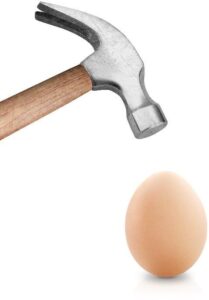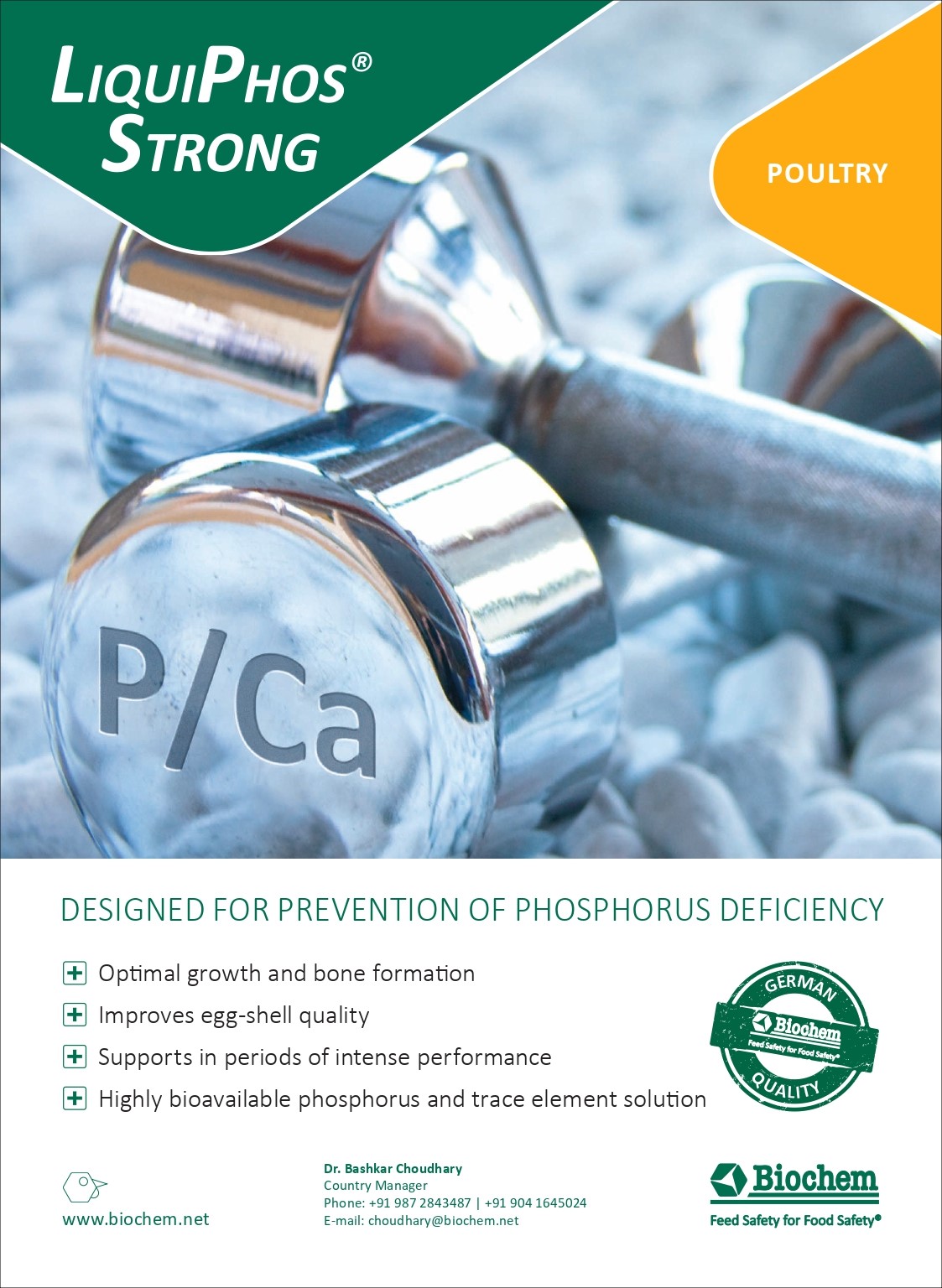Strategic Mineral Supplementation in Layer and Breeder Hens
Melanie Frisch, technical manager IMEA at Biochem Zusatzstoffe
https://www.pashudhanpraharee.com/strategies-to-improve-eggshell-quality-in-commercial-layer-farms/
In layer and breeder flocks, the eggshell quality is a closely monitored quality criterium. Cracked and broken eggs are the major cause of downgrading eggs, negatively impacting the number of usable eggs. In breeders, undetected microcracks are one of the causes of a reduced hatching rate and impaired chick quality.
Eggshell parameters are influenced not only by the genetic of the hen, but also through nutrition, mineral supply, health status and management factors. When addressing eggshell quality issues, the first focus is usually on the calcium supply of the hen. It makes up the major component of the eggshell.
But the supply with other minerals is just as crucial and their relevance for eggshell stability oftentimes underestimated. One key player is phosphorus. Its metabolism is closely intertwined with that of calcium. Being one of the most important building blocks of life, the presence and availability of this element is limited though. That is why taking a closer look at the phosphorus supply of poultry is so important.
Mineral Bioavailability
The presence of phytate in the diets is a limiting factor for the bioavailability of native phosphorus sources.
Therefore, the use of phytases is common and well- established practice. Continuous research and further development of this helpful additive is contributing greatly to increasing phosphorus bioavailability.

Both layer and breeder farms will benefit from a good eggshell strength
An oftentimes overlooked aspect in the discussion of phosphorus supply is the varying demand of this mineral by the animal throughout the day. During eggshell formation at nighttime, while there is no feed intake, the calcium demand is covered by degradation of hydroxyapatite from medullary bone. Due to its concurrent release, the phosphorus levels also rise. But since there is no demand at the moment of its release, this valuable mineral has to be excreted via the urine.
Once feed intake commences in the morning, the eggshell formation comes to an end and the available calcium from the diet can be deposited in the bone. Sufficient phosphorus needs to be present as it is also needed for bone formation. Hence, phosphorus demand is the highest in the morning hours of the day, while the mineral deposits in the bone are replenished. This has been confirmed by Keshavarz in 19981, who demonstrated that voluntary phosphorus intake was indeed higher in the morning when hens were offered a choice of feeds. 2
1 Keshavarz, K. (1998) Investigation on the possibility of reducing protein, phosphorus, and calcium requirements of laying hens by manipulation of time of access to these nutrients. Poultry Science 77, 1320– 1332.
2 Vitti, D. M., & Kebreab, E. (Eds.). (2010). Phosphorus and calcium utilization and requirements in farm animals. CABI.
With this knowledge in mind, it only makes sense to increase the phosphorus supply of layers and breeders in the first half of the day. With progressing age, the mineral deposits in the medullary bone become more and more depleted. A targeted supplementation at the beginning of lay aids during this metabolic transition, while older hens can be supported to reduce the risk of osteoporosis, when not enough bone substance can be replenished otherwise. In any case, the eggshell quality will benefit.
While it is impracticable to vary the amount of phosphorus in the feed during the day, the provision of highly bioavailable phosphorus sources via the drinking water is an easy and effective tool to implement on almost any farm. Biochem’s product LiquiPhos® Strong was developed for this use and provides one of the highest concentrations of phosphorus in a liquid supplement on the market. The following field trial demonstrates its efficacy on eggshell strength at interval use.
Field trial
A commercial Cobb broiler breeder flock with 21,200 females was equally divided into four groups. Two groups, T1 and T2, were treated with LiquiPhos® Strong in weeks 41 and 42 of age and two groups were left as a control C1, C2. The measurements of eggshell thickness were taken regularly from week 37 up to 44 weeks of age. Samples of 10 eggs from every group were taken once a week and measurements were taken by micrometer. The dosage of LiquiPhos® Strong was 1 ml/liter drinking water in the first half of the day over five consecutive days per treatment week.
The measurements in the weeks before the first application (week 37 until week 40) of LiquiPhos® Strong (pre-period) showed an average eggshell thickness of 0.330 mm for the trial groups and 0.3365 mm for the control groups. In the second half the trial (week 41 until week 44), deviations in these values were noted. The trial groups showed an average increase in eggshell thickness by 1.2 %, while the control groups showed an average decrease by 2.04 %.
Table 1: Results of eggshell thickness. Averages of 10 eggs per group per week. Measurement in mm.
|
The field trial clearly demonstrated that supplementation of LiquiPhos® Strong via the drinking water for just two treatment intervals results in improved eggshell thickness, an indicator for eggshell stability.
Conclusion
With increasing age of layer and broiler breeder hens, the egg weight and size naturally increase. At the same time, the eggshell does not adapt in equal parts: the same amount of eggshell mass must cover a much larger egg, resulting in a thinner eggshell. The daily phases of mobilization and deposition of calcium are crucial for eggshell quality but gain a long-term risk for reduced bone stability. Counteracting this phenomenon with strategic supplementation of phosphorus can be a tool to maintain the productivity and longevity of layer and breeder hens.
https://www.sciencedirect.com/science/article/pii/S0032579119577951


